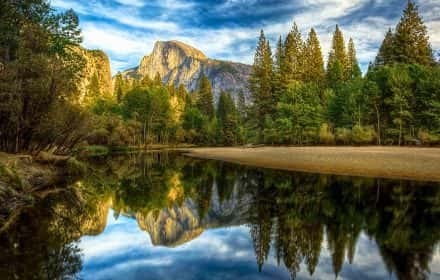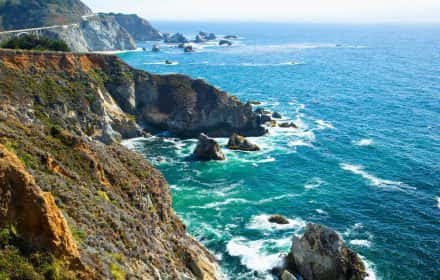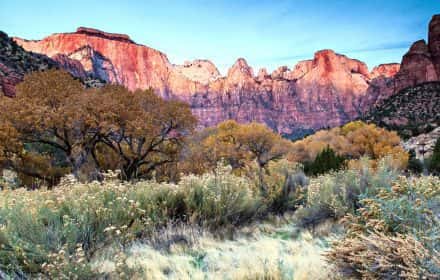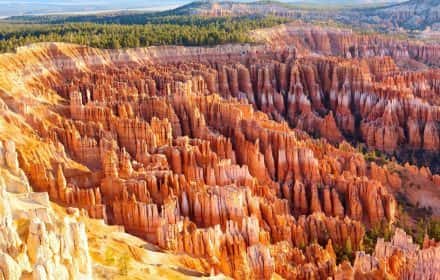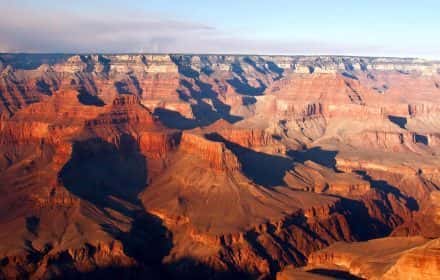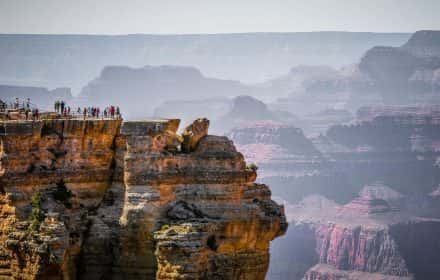This site uses affiliate links, meaning that if you make a purchase through our links, we may earn an affiliate commission.
Prepare to immerse yourself in the unrivaled beauty of the Pacific Northwest’s national treasures. Oregon and Washington boast four majestic national parks that will leave you in awe of Mother Nature’s artistry.
In this guide, we will take you through the spellbinding landscapes of these national parks in Oregon and Washington. From the iconic Crater Lake with its crystalline waters to the diverse wonders of Olympic National Park, each location offers a unique and unforgettable experience.
With insider tips and an expertly curated list of things to do, we will ensure you make the most of your visit to these natural wonders. So, please put on your exploring hat, and let’s venture into the captivating world of these extraordinary national parks in Oregon and Washington.
Oregon: Crater Lake National Park
Quick Facts About the Park
- Founded: Crater Lake National Park was established on May 22, 1902, making it the fifth oldest national park in the United States.
- Visitors: In 2022, the park welcomed over 700,000 visitors, drawn to its captivating scenery and recreational opportunities.
- Size: The park covers an expansive area of approximately 183,224 acres.
- Location: Situated in southern Oregon, Crater Lake National Park can be found within the caldera of Mount Mazama, a volcano that collapsed around 7,700 years ago.
- Entrance Fee: As of 2022, the entrance fee for Crater Lake National Park is $30 per vehicle, allowing access for seven consecutive days.
- Notable Facts:
- The park’s namesake and centerpiece, Crater Lake, is renowned for its intense blue color and impressive depth, reaching approximately 1,949 feet. It is the deepest lake in the United States and one of the deepest in the world.
- Rising from the tranquil waters of Crater Lake, Wizard Island is a cinder cone formed by subsequent volcanic activity.
- An intriguing feature of the lake is the “Old Man of the Lake,” a large hemlock tree stump that has been floating vertically in the water for over a century.
- The park’s origins can be traced back to the massive eruption of Mount Mazama around 7,700 years ago. The explosion was so powerful that it created the caldera, which later filled with rain and snowmelt to form the stunning Crater Lake.
3 Essential Tips for Unforgettable Visit to Crater Lake
1. Best Ways to Get to Crater Lake National Park
- By Car: There are several entry points depending on your direction of travel. The North Entrance (via Oregon Highway 138) and the South Entrance (via Oregon Highway 62).
- By Air: The nearest major airport to Crater Lake is Rogue Valley International-Medford Airport (MFR) in Medford, Oregon. From the airport, you can rent a car and drive to the park, which is around a 1.5 to 2-hour drive away.
2. Best Way to Navigate Inside the Park
- Private Vehicle: Rim Drive is a 33-mile (53 km) scenic road that encircles Crater Lake, providing access to numerous viewpoints and overlooks.
- Boat Tours: During the summer months, you can take a boat tour on Crater Lake to get up close to Wizard Island and witness the lake’s vivid blue waters from a unique perspective. The boat tours offer narrated information about the lake’s geology and history.
- Shuttle Service: The park offers a shuttle service during the summer months, which provides transportation to popular destinations and trailheads.
- Bicycling: Bicycling is allowed on Rim Drive, providing a fantastic way to explore the park at a slower pace. Be prepared for challenging uphill sections, but the rewarding views make it worth the effort.
3. Best Time to Explore the Park (Time Your Visit Right)
Each season offers unique experiences, and the park’s elevation of around 6,000 feet influences the weather throughout the year.
- Summer (July to September): Summer is the most popular time to visit Crater Lake National Park. The snow has mostly melted, and the roads and trails are fully accessible. The park’s facilities are open, and the boat tours to Wizard Island are operating. Keep in mind that it can get crowded, especially in July and August.
- Fall (September to October): Fall is a beautiful time to visit the park, as the foliage turns vibrant shades of orange, yellow, and red. The crowds start to diminish compared to the peak summer season.,
- Winter (November to April): The Rim Drive and some park facilities are closed due to heavy snowfall, but you can still visit and enjoy cross-country skiing, snowshoeing, and snowboarding. Keep in mind that the park’s North Entrance is closed in winter, and only the South Entrance remains accessible.
- Spring (May to June): Spring is the time when the snow starts to melt, and the park gradually opens up. May and June can still have lingering snow at higher elevations, but the park starts to bloom with wildflowers, making for picturesque views.
Top 10 Experiences in Crater Lake You Can't Miss
- Rim Drive: Drive or bike along the 33-mile (53 km) Rim Drive for breathtaking views of Crater Lake from various overlooks and viewpoints.
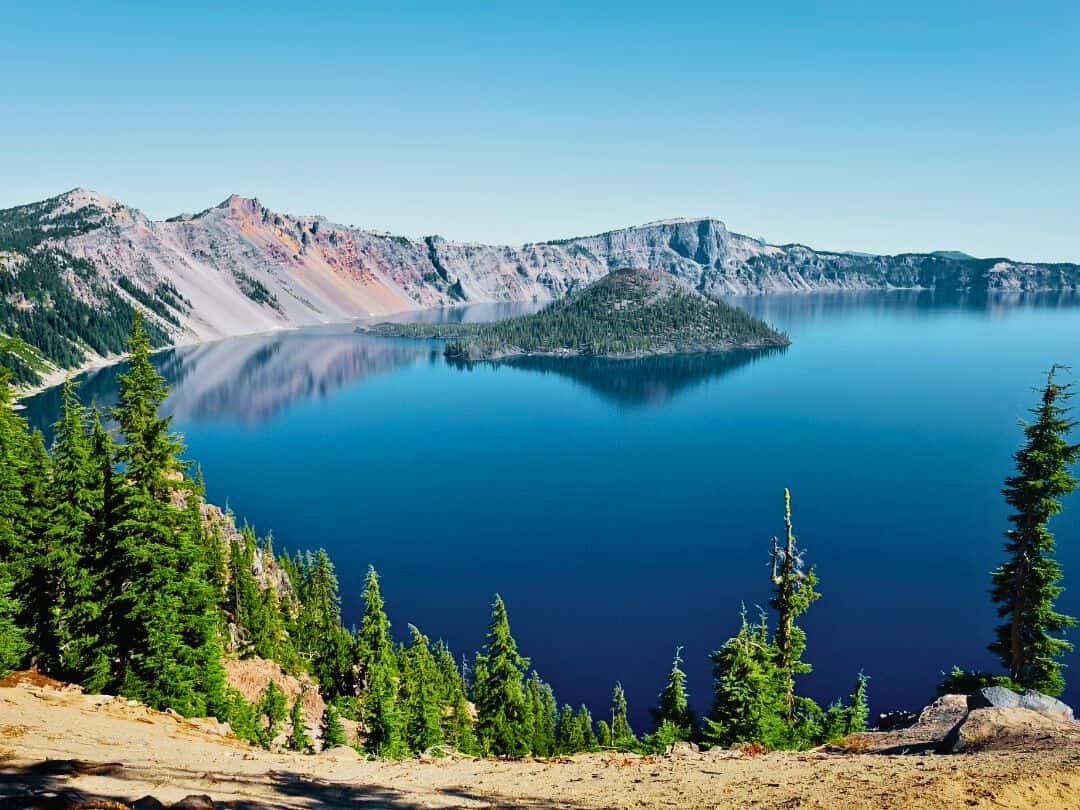
National Parks in Oregon and Washington / Crater Lake National Park (View of Crater Lake from Rim Drive)
- Discovery Point: Stop at Discovery Point, one of the park’s most famous viewpoints, offering stunning vistas of the lake and surrounding cliffs.
- Cleetwood Cove Trail: Hike the Cleetwood Cove Trail, the only trail that leads down to the lake’s shore. Take a boat tour or swim in the clear, cold waters of Crater Lake.
- Watchman Peak: Hike to the summit of Watchman Peak for a panoramic view of Crater Lake and Wizard Island, especially stunning during sunrise or sunset.
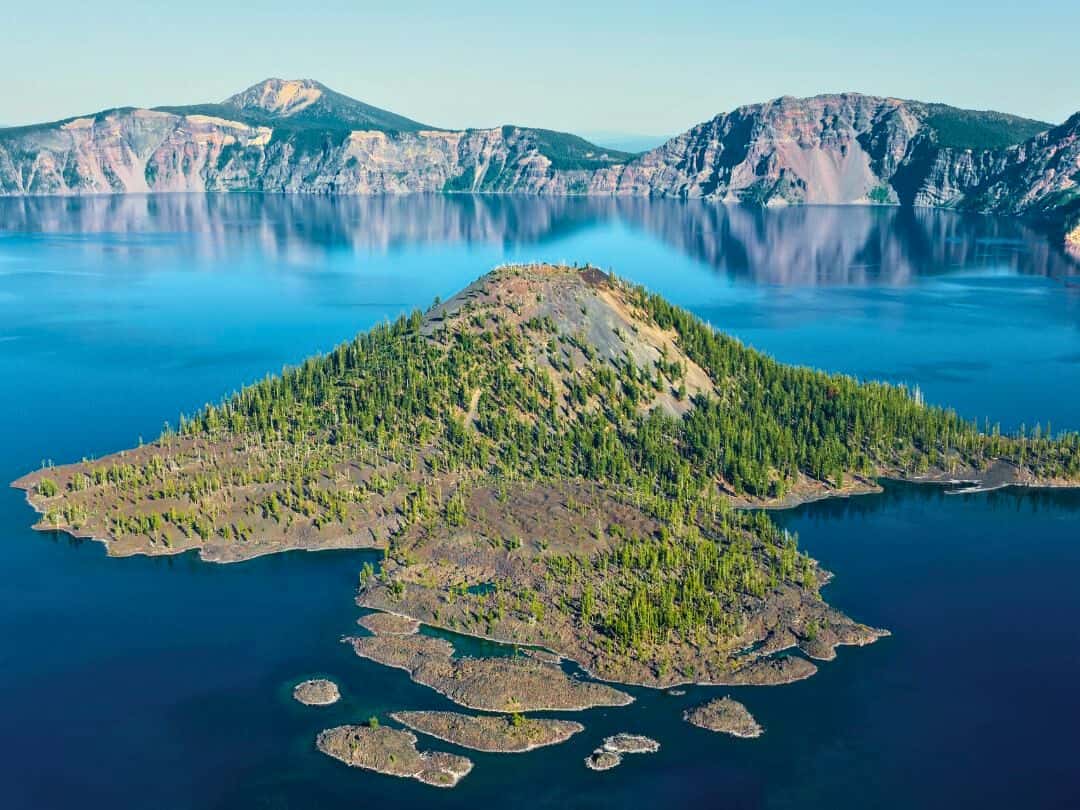
National Parks in Oregon and Washington / Crater Lake National Park (Closeup of Wizard Island from Watchman Peak)
- Pinnacles Overlook: Visit the Pinnacles Overlook for a unique perspective of Crater Lake’s rock formations, formed by volcanic activity.
- Vidae Falls: Take a short walk to Vidae Falls, a picturesque waterfall located near Rim Village.
- Phantom Ship: Gaze upon the Phantom Ship, an island in Crater Lake resembling a ghostly sailing vessel. View it from various points along Rim Drive.
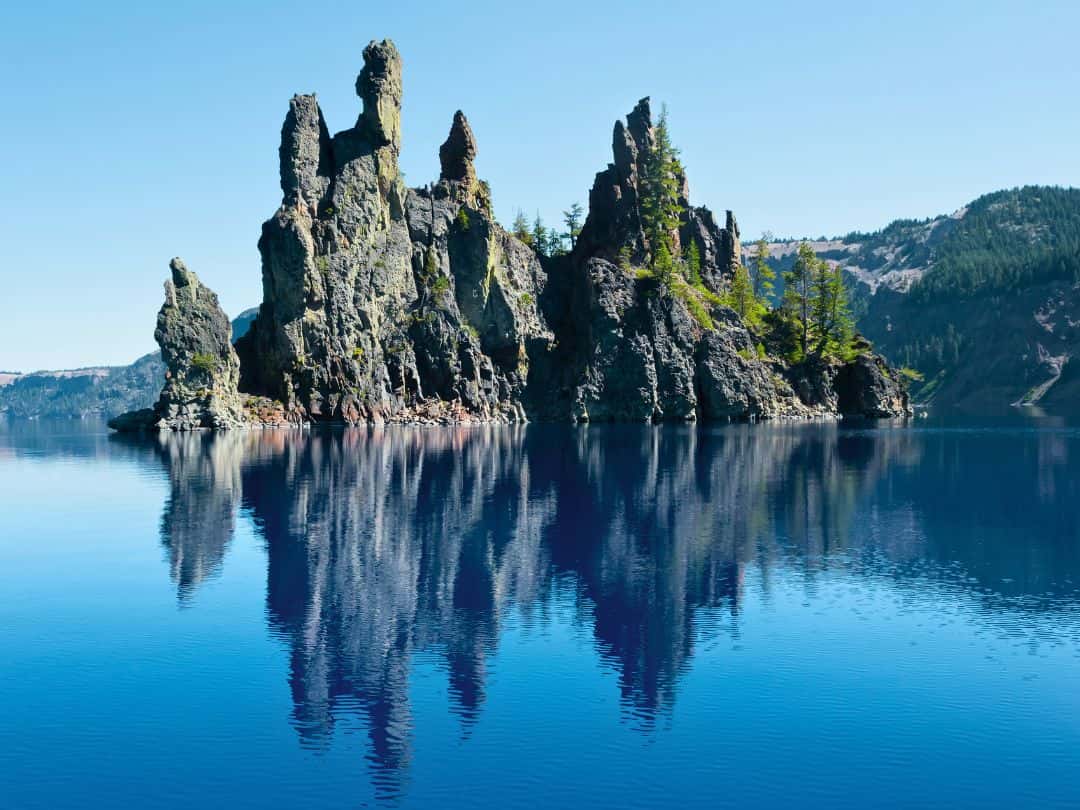
National Parks in Oregon and Washington / Crater Lake National Park (Phantom Ship)
- Wildflower Viewing: During late spring and early summer, enjoy the colorful wildflower displays along various hiking trails and meadows.
- Wizard Island: Take a boat tour to Wizard Island and explore this volcanic cinder cone. Hike to the summit for stunning views of the lake and surrounding landscape.
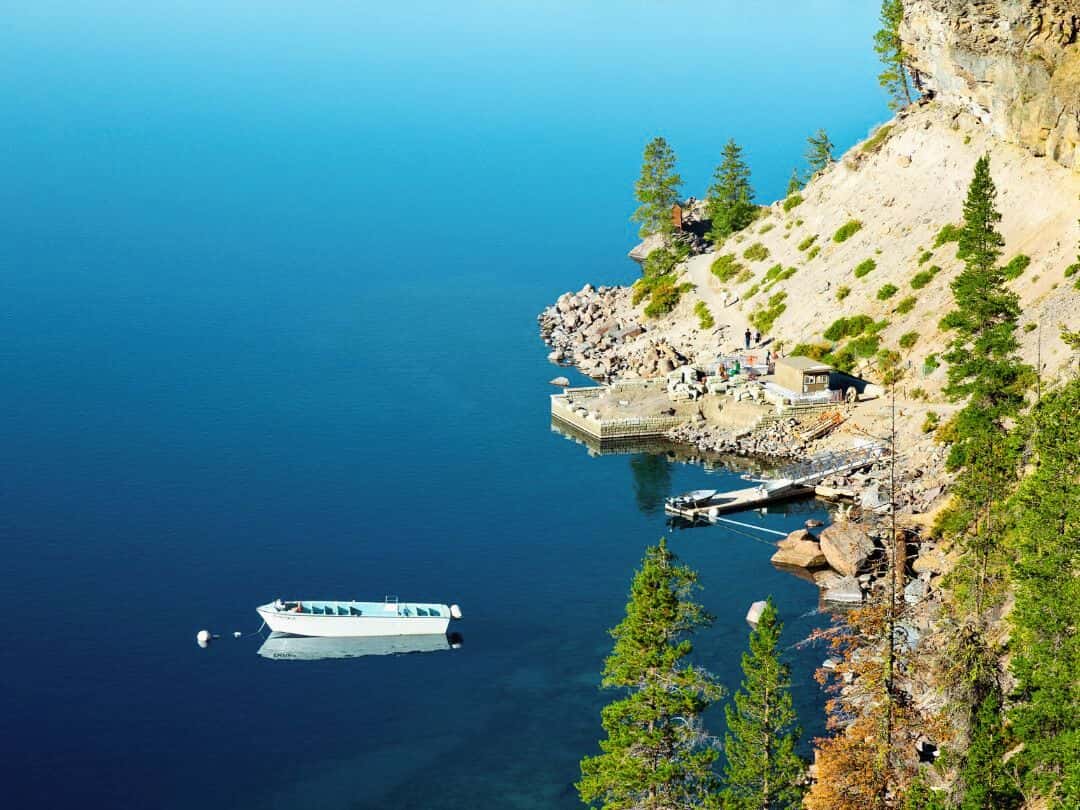
National Parks in Oregon and Washington / Crater Lake National Park (Dock for Boat Tours to Wizard Island)
- Winter Activities: In the winter, experience the park’s serene beauty through snowshoeing or cross-country skiing, and witness the lake surrounded by snow-capped peaks.
- Cleetwood Cove Trail: Hike the Cleetwood Cove Trail, the only trail that leads down to the lake’s shore. Take a boat tour or swim in the clear, cold waters of Crater Lake.
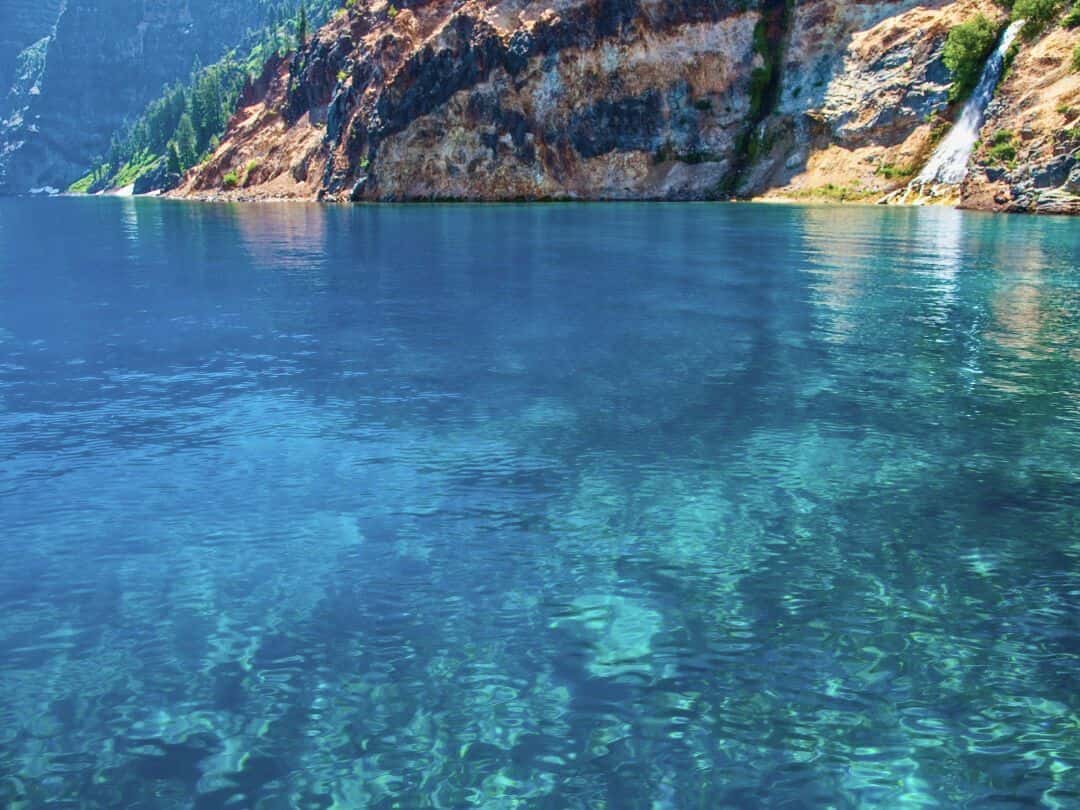
National Parks in Oregon and Washington / Crater Lake National Park (Famous Blue Water of Crater Lake)
Ultimate Adventure in Crater Lake
- Ultimate Adventure in Crater Lake National Park:
The ultimate experience in Crater Lake National Park is staying at Crater Lake Lodge. This historic lodge offers breathtaking views of the lake from its rooms and common areas.
Wake up to stunning sunrises over Crater Lake and enjoy the tranquility of the surroundings. The lodge’s location allows you to fully immerse yourself in the beauty of the park, and it provides an unforgettable and magical stay at one of the most iconic national parks in the United States.
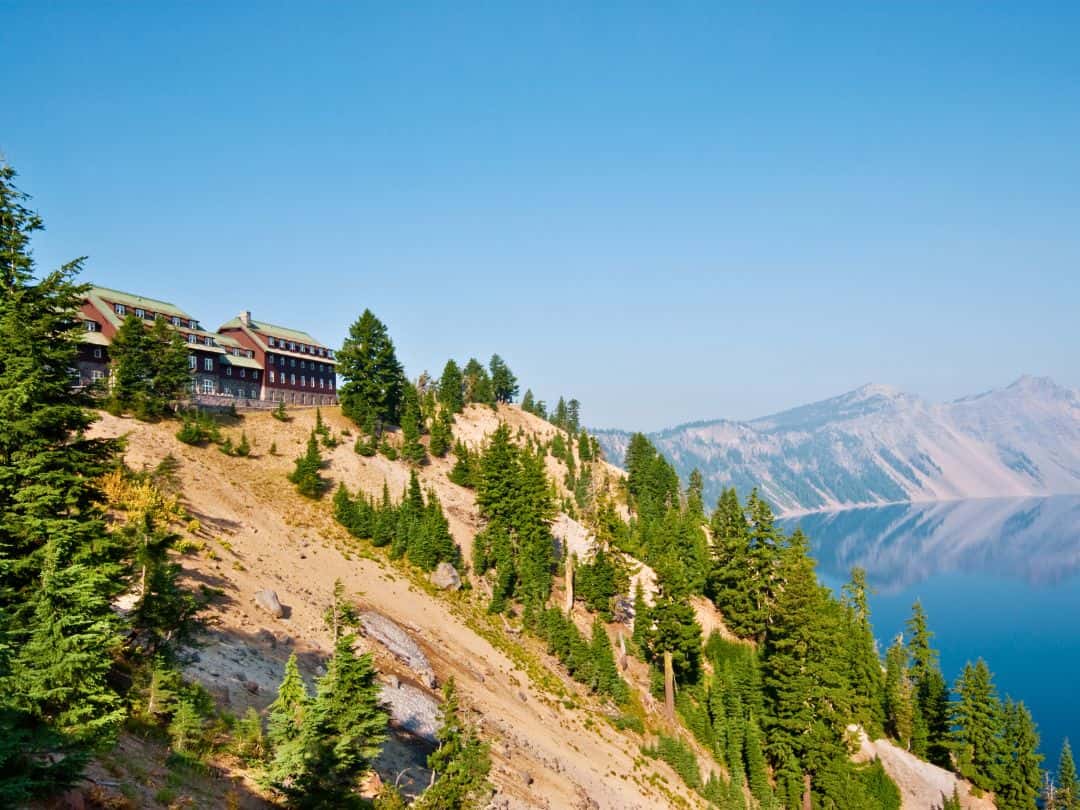
National Parks in Oregon and Washington / Crater Lake National Park (Historic Crater Lake Lodge)
Washington: Mount Rainier National Park
Quick Facts About the Park
- Founded: Established on March 2, 1899, Mount Rainier National Park stands as the nation’s fifth national park, preserving the pristine beauty of this volcanic landscape.
- Visitors in 2022: In 2022, the park welcomed over one million visitors, drawn to its breathtaking scenery and diverse recreational opportunities.
- Size: The park covers a vast area of approximately 369,09 acres, encompassing Mount Rainier, an active stratovolcano, and the highest peak in the Cascade Range.
- Location: Situated in west-central Washington, Mount Rainier National Park is a prominent part of the Pacific Northwest’s landscape.
- Entrance Fee: The entrance fee for Mount Rainier National Park is $35 per vehicle, valid for seven consecutive days.
- Notable Facts:
- Towering at an elevation of 14,411 feet, Mount Rainier is an active stratovolcano and the centerpiece of the park. Its snow-capped summit is visible from miles away, making it a beloved landmark in the region.
- During the summer months, the park’s alpine meadows burst into a kaleidoscope of colors as wildflowers blanket the landscape.
- Paradise and Sunrise visitor centers offer some of the most spectacular viewpoints in the park. Paradise, on the south side, offers breathtaking views of the mountain, while Sunrise, on the northeast side, provides stunning vistas of the surrounding valleys and peaks.
- Mount Rainier is home to several glaciers and numerous waterfalls, including the impressive Christine Falls and the powerful Narada Falls. The glaciers contribute to the formation of pristine alpine lakes and rivers throughout the park.
3 Essential Tips for Unforgettable Visit to Mount Rainier
1. Best Ways to Get to Mount Rainier National Park
- By Car: There are multiple entrances to the park, but the two main ones are the Nisqually Entrance on the southwest side and the White River Entrance on the northeast side. From Seattle, take Interstate 5 south to State Route 7, which leads to the Nisqually Entrance. The drive takes approximately 2 to 2.5 hours, depending on traffic and road conditions.
- By Air: The closest major airport to Mount Rainier National Park is Seattle-Tacoma International Airport (SEA), located about 80 miles (129 km) northwest of the park. From the airport, you can rent a car and drive to the park. The driving time from SEA airport to the park is approximately 2.5 to 3 hours.
2. Best Navigating Options Inside the Park
- Private Vehicle: The park features a scenic 150-mile road network, allowing you to access many viewpoints, trailheads, and visitor centers. The main road, known as Paradise Road, takes you to the popular Paradise area, offering stunning views of Mount Rainier and various alpine meadows.
- Paradise Shuttle: During the summer months, the park operates a shuttle service at the Paradise area, making it easier to explore without the hassle of finding parking. The shuttle takes visitors to different points of interest, trailheads, and the Jackson Visitor Center.
3. Best Time to Explore the Park (Time Your Visit Right)
- Summer (July to September): Summer is the best time to visit the park. The snow has mostly melted, and the roads and trails are fully accessible. Wildflowers bloom in the alpine meadows. All the facilities are open. The clear weather in summer provides excellent visibility of Mount Rainier!
- Fall (September to October): Fall brings stunning autumn colors to the park as the foliage turns shades of yellow, orange, and red. September is generally the best time to catch the fall colors. The weather can still be pleasant but be prepared for cooler temperatures, especially at higher elevations.
- Winter (November to April): In winter, the park transforms into a winter wonderland with snow-covered landscapes. The lower elevations, such as Longmire and Paradise, are accessible, and you can enjoy snowshoeing, cross-country skiing, and winter photography.
- Spring (May to June): Spring is the time when the park starts to awaken from winter. May and June can still have significant snow at higher elevations, but lower trails and roads gradually open up. Spring is an excellent time for waterfalls and photography.
Top 10 Experiences in Mount Rainier You Can't Miss
- Skyline Trail: Hike the Skyline Trail at Paradise to experience breathtaking views of Mount Rainier, alpine meadows, and glaciers.
- Sunrise: Explore Sunrise, the highest point accessible by car in the park, offering stunning views of the mountain and surrounding landscapes.
- Paradise: Visit Paradise, one of the park’s most famous areas, known for its stunning wildflower meadows, iconic views of Mount Rainier, and various hiking trails.
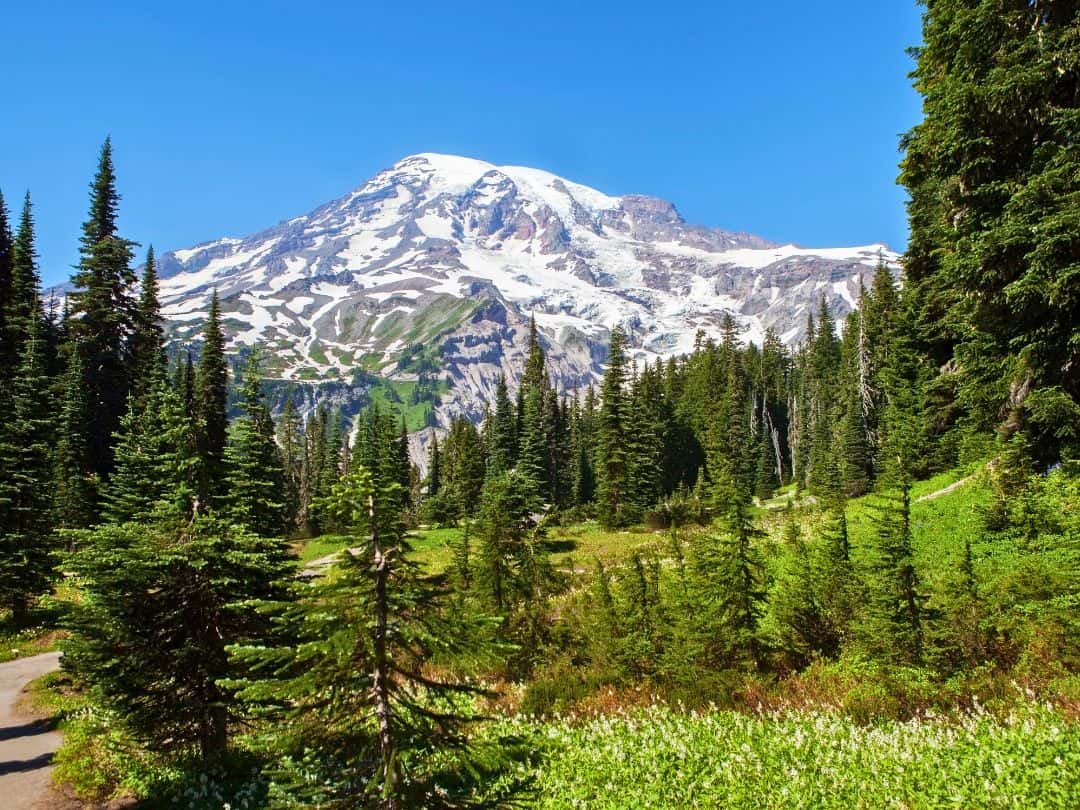
National Parks in Oregon and Washington / Mount Rainier National Park (Views of Mount Rainier from Paradise)
- Mowich Lake: Explore Mowich Lake, a remote and serene area with scenic hiking trails and a beautiful alpine lake.
- Myrtle Falls: Witness a picturesque waterfall as it cascades down a series of rocky steps, offering a stunning backdrop with Mount Rainier towering in the background.
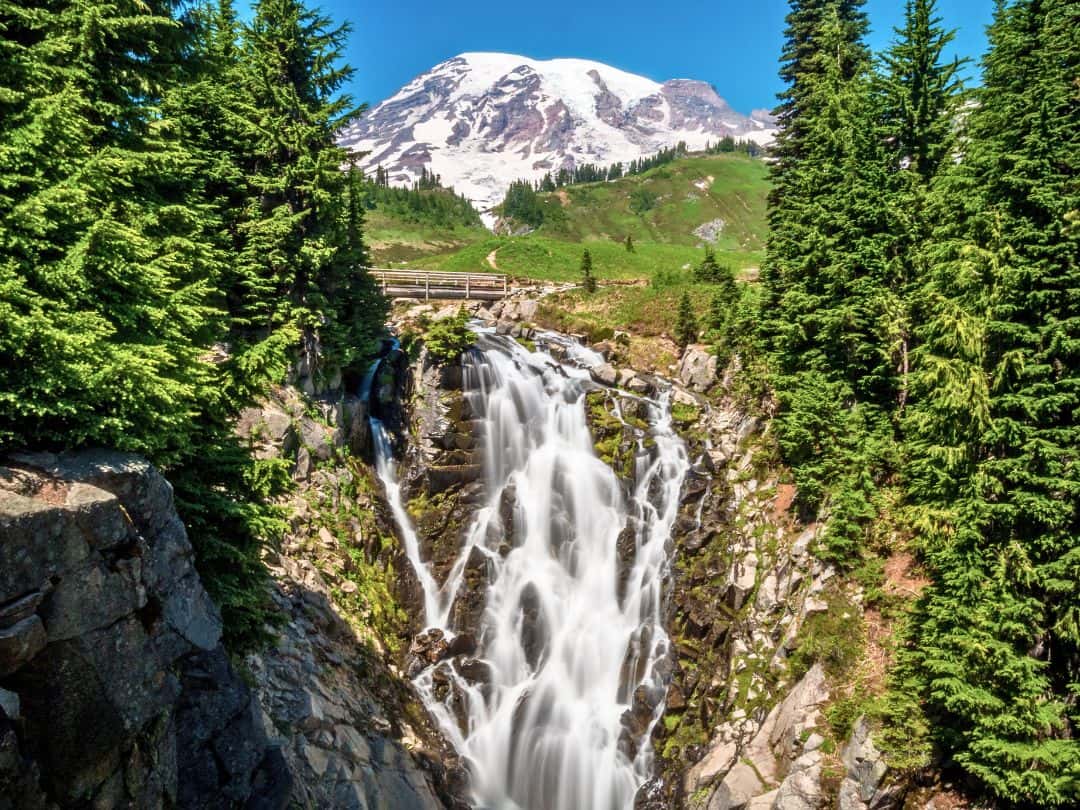
National Parks in Oregon and Washington / Mount Rainier National Park (Views of Mount Rainier from Paradise)
- Narada Falls: Witness the powerful Narada Falls, one of the park’s most beautiful waterfalls, plunging 188 feet over a rocky cliff.
- Spray Park: Hike the Spray Park Trail for stunning wildflower displays and up-close views of Mount Rainier’s glaciers and waterfalls.
- Reflection Lakes: Visit Reflection Lakes for stunning mirror-like reflections of Mount Rainier on calm days, offering fantastic photo opportunities.
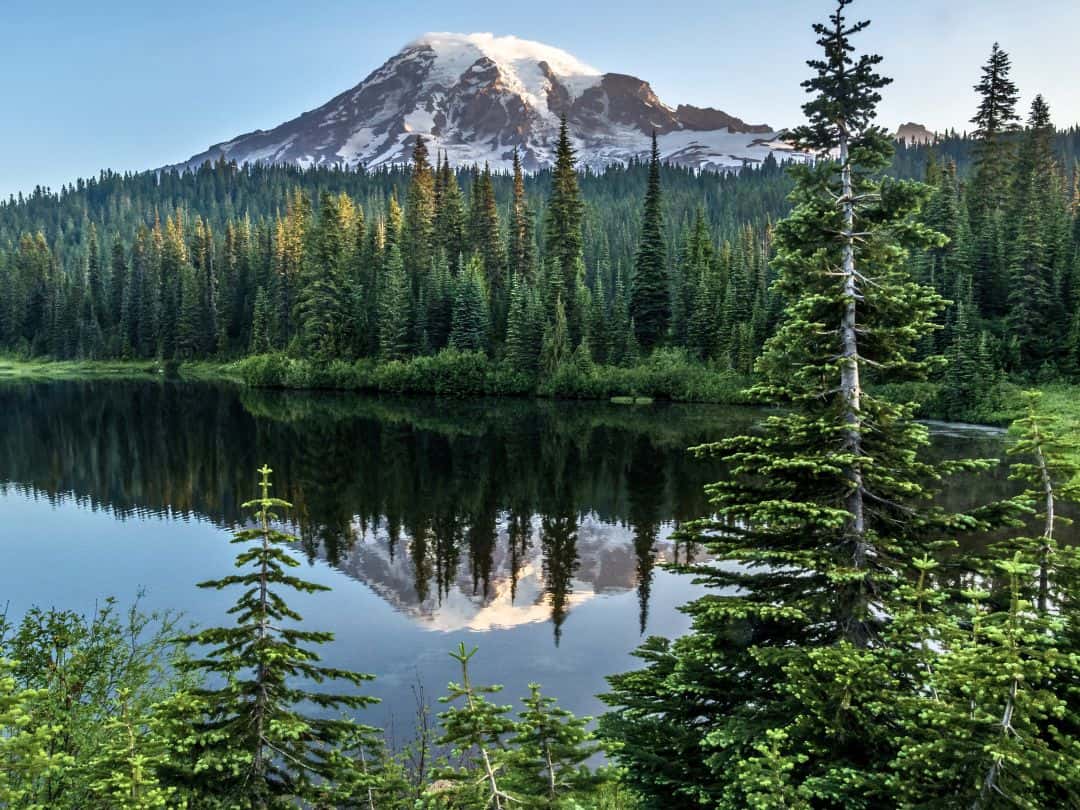
National Parks in Oregon and Washington / Mount Rainier National Park (Reflection Lakes)
- Wonderland Trail: Hike a section of the Wonderland Trail, a 93-mile (150 km) trail that encircles Mount Rainier, offering diverse landscapes and challenging adventures.
- Grove of the Patriarchs: Take a short hike to the Grove of the Patriarchs, a magical old-growth forest featuring ancient and massive trees.
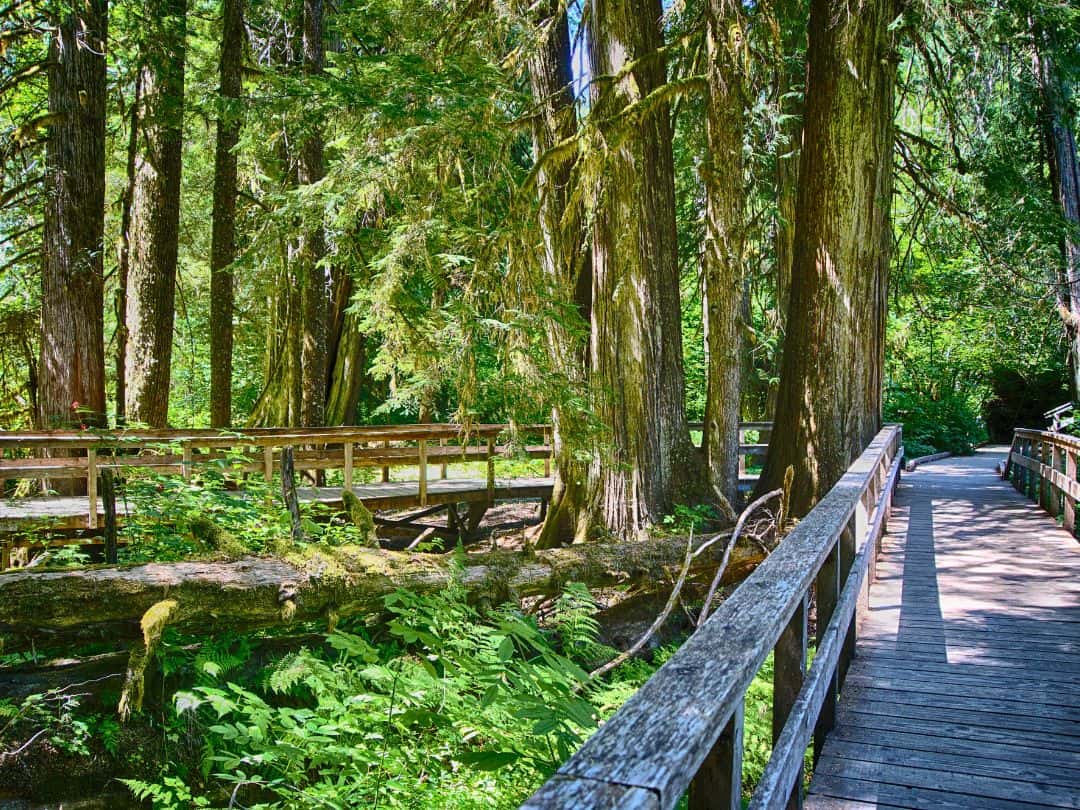
National Parks in Oregon and Washington / Mount Rainier National Park (Grove of the Patriarchs)
Ultimate Adventure in Mount Rainier
- Sunset at Tipsoo Lake: Experience a magical sunset at Tipsoo Lake, a picturesque spot with Mount Rainier as the backdrop.
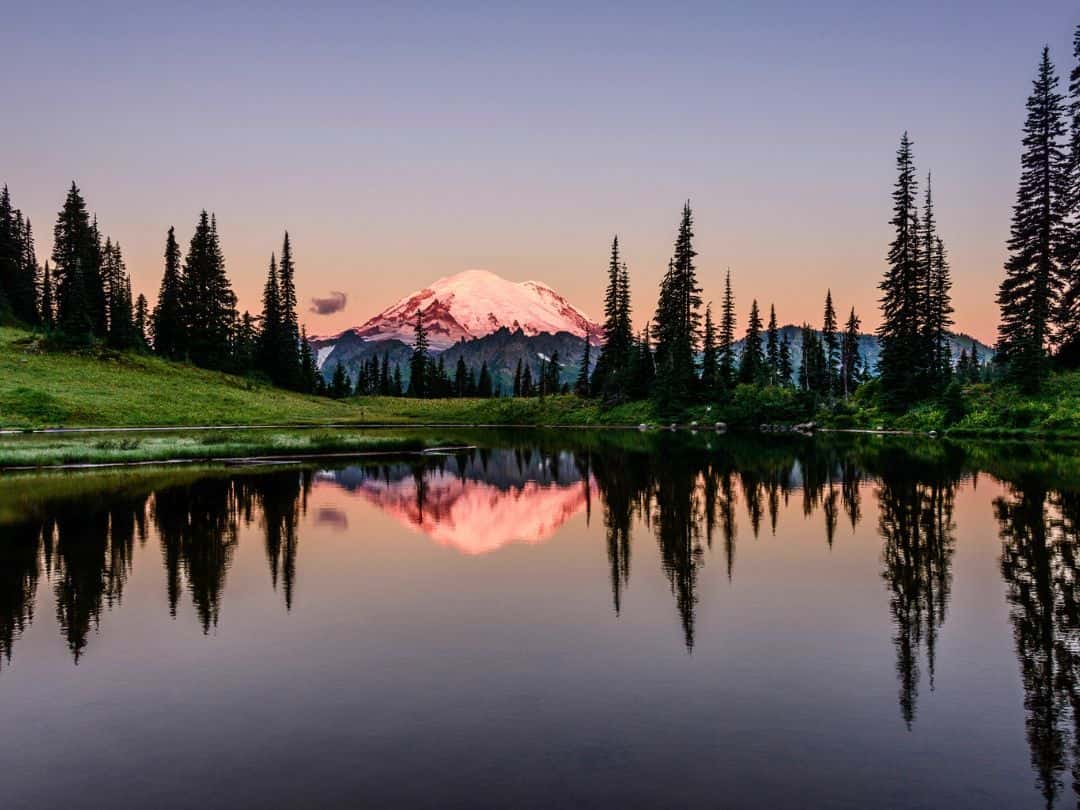
National Parks in Oregon and Washington / Mount Rainier National Park (Sunset at Tipsoo Lake)
Looking for something more challenging? How about:
- Summiting Mount Rainier: The ultimate experience in Mount Rainier National Park is summiting the mountain itself. However, this is an extremely challenging and technical endeavor that requires mountaineering skills and equipment.
Climbing to the 14,411-foot summit of Mount Rainier is a major accomplishment and offers unparalleled views of the surrounding landscapes.
For those without mountaineering experience, consider hiring a professional guide service for a safe and guided summit attempt. Even if you do not reach the summit, the journey and experience of attempting to climb this iconic volcano will leave a lasting impression and a deep connection to the park’s rugged beauty.
Washington: Olympic National Park
Quick Facts About the Park
- Founded: Established on June 29, 1938, Olympic National Park was designated as the 13th national park in the United States, preserving the stunning landscapes and ecological diversity of the Olympic Peninsula.
- Visitors: In 2022, the park welcomed over 3.5 million visitors.
- Size: Olympic National Park covers a vast area of approximately 922,651 acres, making it one of the largest national parks in the Pacific Northwest.
- Location: Located in the Olympic Peninsula of Washington state.
- Entrance Fee: The entrance fee for Olympic National Park is $30 per vehicle, allowing access for seven consecutive days.
- Notable Facts:
- The park is home to lush temperate rainforests, where towering trees, draped in moss and ferns, create an otherworldly atmosphere. The Hoh Rainforest and Quinault Rainforest are among the most renowned spots to witness this enchanting ecosystem.
- The iconic Mount Olympus, standing at 7,980 feet, is the highest peak in the park. Surrounded by glaciers, this majestic mountain is a prominent feature of the Olympic landscape.
- Olympic National Park boasts over 70 miles of wild and rugged coastline, dotted with sea stacks, tide pools, and dramatic cliffs.
- The Enchanted Valley, located in the Quinault Rainforest, is a remote and stunningly beautiful destination, accessible via a challenging backcountry hike.
3 Essential Tips for Unforgettable Visit to Olympic
1. Best Ways to Get to Olympic
- By Car: Olympic National Park has multiple entry points accessible by car. The most common entrances are the Hurricane Ridge Entrance near Port Angeles, the Elwha Entrance, the Lake Crescent/Marymere Falls Entrance, and the Hoh Rain Forest Visitor Center. If you are coming from Seattle, the drive to the Hurricane Ridge Visitor Center takes approximately 2.5 to 3 hours.
- By Air: The closest major airport to Olympic National Park is Seattle-Tacoma International Airport (SEA), located about 100 miles southeast of the park. From the airport, you can rent a car and drive to one of the park’s various entrances, as mentioned earlier. The driving time from SEA airport to different parts of the park can range from 2.5 to 4 hours, depending on your chosen entry point and traffic conditions.
2. Best Way to Navigate Inside the Park
- By Car: Driving is one of the most convenient ways to access and navigate Olympic National Park. The park has several entry points with well-marked roads, making it easy to explore different regions.
- Shuttle Service: During the peak summer months, a shuttle service operates in certain areas of the park. The shuttle takes visitors to popular trailheads, campgrounds, and other points of interest, making it easier to explore without worrying about parking.
3. Best Time to Explore the Park (Time Your Visit Right)
- Summer (July to September): Summer is the best time to visit Olympic National Park. The weather is generally pleasant, with warmer temperatures and less rainfall.
- Fall (September to October): Fall is a wonderful time to visit the park. The foliage starts to change colors, with vibrant hues of orange and yellow appearing in the forests and alpine meadows. Fall is a great time for enjoying the park’s tranquil atmosphere.
- Winter (November to April): Winter brings a different kind of beauty to Olympic National Park. The park’s higher elevations receive significant snowfall. Lower elevations, such as the rainforests and coastal areas, experience milder weather.
- Spring (May to June): Spring is a delightful time to visit the park. The snow starts to melt, filling the rivers and waterfalls with rushing water. May and June are also great times for birdwatching, as migratory birds return to the park.
Top 10 Experiences in Olympic You Can't Miss
- Hurricane Ridge: Visit Hurricane Ridge for stunning panoramic views of the Olympic Mountains and opportunities for hiking and wildlife viewing.
- Hoh Rain Forest: Explore the enchanting Hoh Rain Forest, a lush and mossy wonderland with giant trees and diverse plant life.
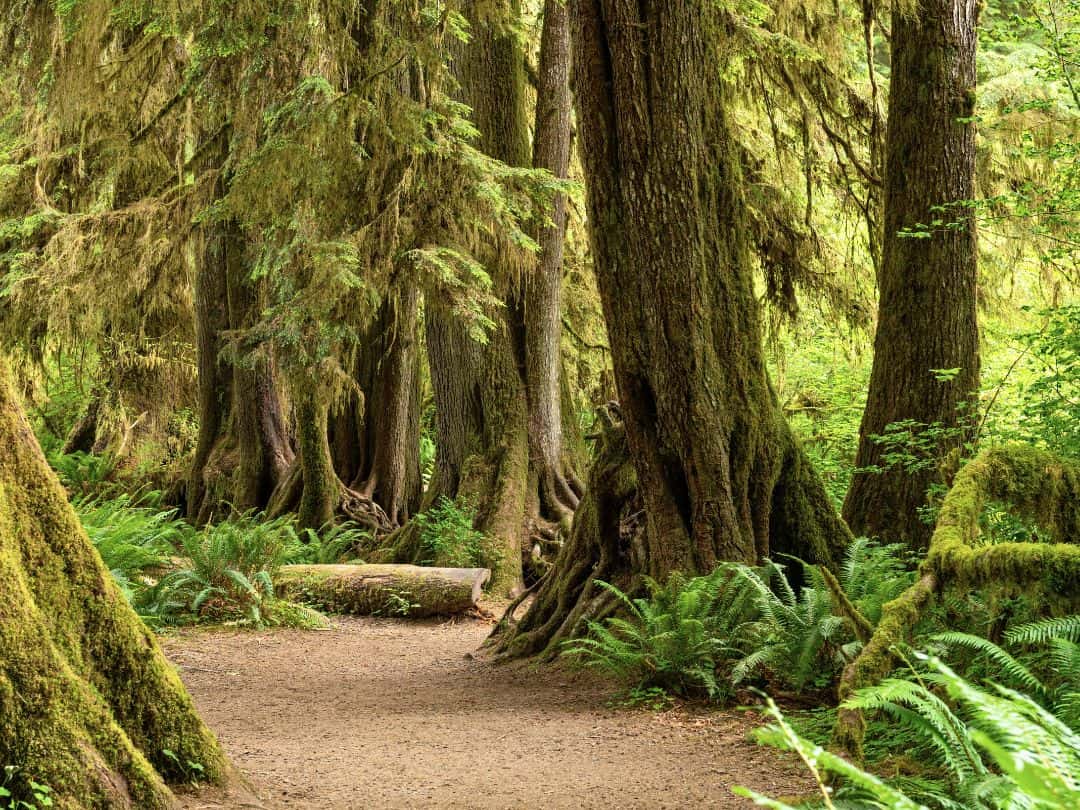
National Parks in Oregon and Washington / Olympic National Park (Hoh Rain Forest, Hall of Mosses)
- Marymere Falls: Take a short hike to Marymere Falls, a beautiful waterfall surrounded by lush greenery.
- Sol Duc Falls: Hike to Sol Duc Falls, a captivating waterfall nestled in the ancient forests of the park.
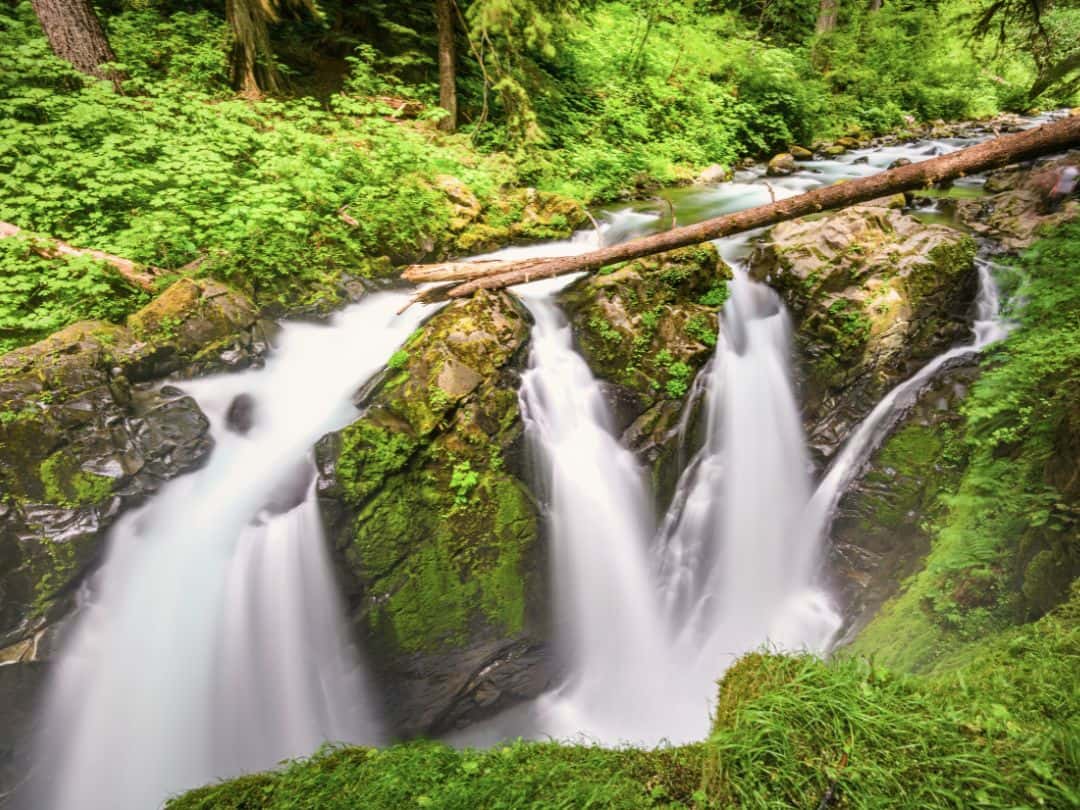
National Parks in Oregon and Washington / Olympic National Park (Sol Duc Falls)
- Mount Ellinor: Hike Mount Ellinor for a challenging but rewarding trek with panoramic views of the Olympic Peninsula.
- Ruby Beach: Visit Ruby Beach for its picturesque sea stacks, driftwood-lined shores, and stunning sunsets.
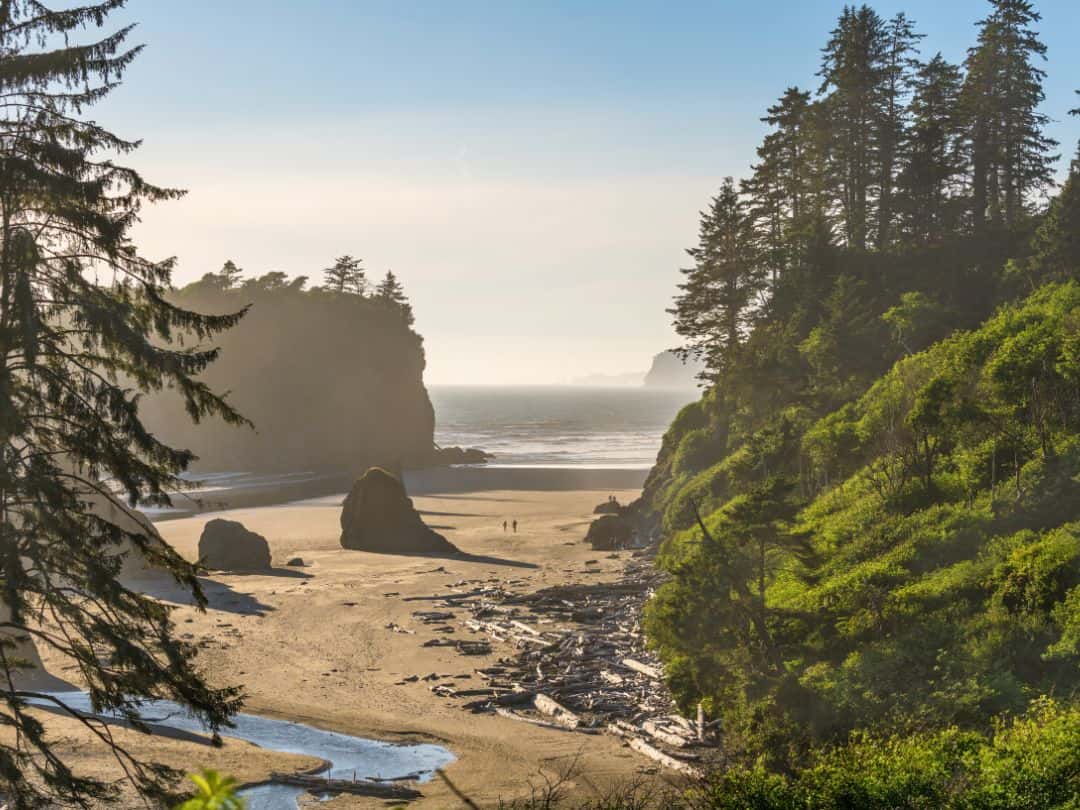
National Parks in Oregon and Washington / Olympic National Park (Ruby Beach)
- Second Beach: Discover the secluded Second Beach, accessible by a short hike, offering a serene and peaceful coastal experience.
- Rialto Beach: Witness the dramatic coastal beauty at Rialto Beach, with sea stacks, tide pools, and crashing waves.
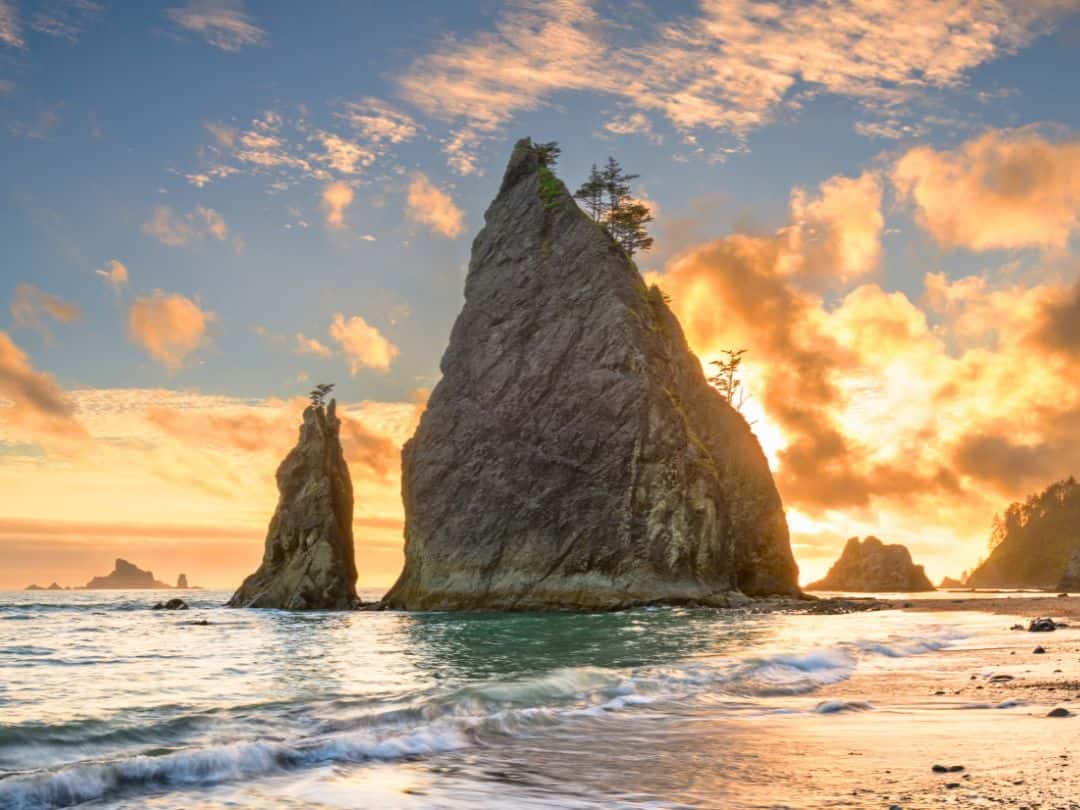
National Parks in Oregon and Washington / Olympic National Park (Rialto Beach at Sunset)
- Ozette Loop Trail: Hike the Ozette Loop Trail to experience a coastal wilderness featuring rugged cliffs and sea stacks.
- Lake Crescent: Enjoy the crystal-clear waters of Lake Crescent, perfect for kayaking, boating, or simply relaxing by the shore.
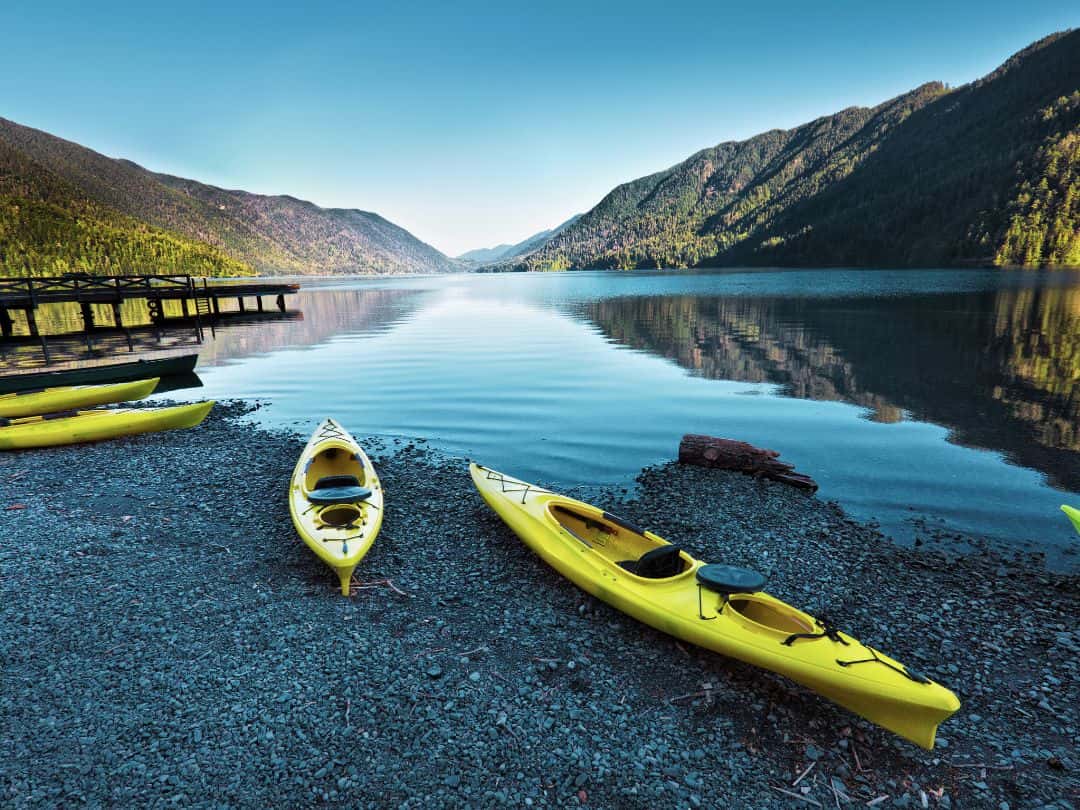
National Parks in Oregon and Washington / Olympic National Park (Lake Crescent)
Ultimate Adventure in Olympic
- Backpacking the Enchanted Valley: The ultimate experience in Olympic National Park is backpacking to the Enchanted Valley.
This multi-day hike takes you deep into the heart of the park’s wilderness, leading to the breathtaking Enchanted Valley, surrounded by towering peaks and fed by stunning waterfalls. Along the way, you will encounter diverse ecosystems, ancient forests, and abundant wildlife.
Camping under the stars in this enchanting valley will leave you with unforgettable memories and a profound connection to the park’s natural wonders.
Washington: North Cascades National Park
Quick Facts About the Park
- Founded: Established on October 2, 1968.
- Visitors: In 2022, the park welcomed over 300,000 visitors.
- Size: North Cascades National Park encompasses a vast area of approximately 504,780 acres, sprawling across rugged peaks and pristine wilderness.
- Location: Situated in the northern part of Washington state.
- Entrance Fee: The entrance fee for North Cascades National Park is $30 per vehicle, providing access for seven consecutive days.
- Notable Facts:
- The North Cascades earned the nickname “The American Alps” due to their rugged and glaciated terrain, often compared to the famous mountain range in Europe.
- The park’s landscape is shaped by a multitude of glaciers, which have carved deep valleys, rugged peaks, and breathtaking U-shaped valleys throughout the region.
- Ross Lake and Diablo Lake are stunning turquoise-hued lakes that are iconic features of the park, offering mesmerizing vistas, fantastic boating opportunities, and excellent camping spots.
- One of the most famous hiking trails in the park, Cascade Pass Trail, leads visitors through alpine meadows and offers spectacular views of the surrounding peaks and glaciers.
3 Essential Tips for Unforgettable Visit to North Cascades
1. Best Ways to Get to North Cascades National Park
- By Car: North Cascades National Park has several entry points accessible by car. The two main entrances are the North Cascades Highway (State Route 20) from the west and the Ross Lake National Recreation Area from the east. The North Cascades Highway is the primary route to access the park from cities like Seattle and Bellingham.
- By Air: The closest major airport to North Cascades National Park is Seattle-Tacoma International Airport (SEA), located about 130 miles (209 km) southwest of the park. From the airport, you can rent a car and drive to the park’s various entrances using the North Cascades Highway or other designated routes. The driving time from SEA airport to the park’s western entrance is approximately 2.5 to 3 hours.
2. Best Navigating Options Inside the Park
- By Car: Driving is one of the primary ways to access and navigate North Cascades National Park. The park’s main road, the North Cascades Highway (State Route 20), runs through the park’s northern section, offering stunning vistas and access to many trailheads and viewpoints.
3. Best Time to Explore the Park (Time Your Visit Right)
- Summer (July to September): Summer is the most popular time to visit North Cascades National Park. The weather is generally pleasant, with warm days and cool nights. This is the best time for hiking, camping, and exploring the park’s stunning alpine meadows, glaciers, and mountain vistas.
- Fall (September to October): Fall is a beautiful time to visit the park, especially for those seeking a quieter and more serene experience. The foliage turns vibrant shades of orange, yellow, and red, making for spectacular views and photography opportunities.
- Winter (November to April): Many of the park’s roads and facilities are closed due to heavy snowfall, but this is the perfect time for backcountry skiing, snowshoeing, and snowboarding.
- Spring (May to June): The park’s rivers and waterfalls are at their peak during this time, making it an excellent time for photography. The higher elevations may still have significant snow, but lower trails and areas start to open up, making it a good time for hiking and exploring the lower elevations of the park.
Top 10 Experiences in North Cascades You Can't Miss
- Hidden Lake Lookout: Hike to Hidden Lake Lookout for sweeping views of Hidden Lake and the surrounding peaks.
- Blue Lake Trail: Hike the Blue Lake Trail to enjoy stunning alpine scenery and crystal-clear waters.
- Cascade Pass: Hike the Cascade Pass Trail for stunning views of glaciers, peaks, and wildflowers in the heart of the North Cascades.
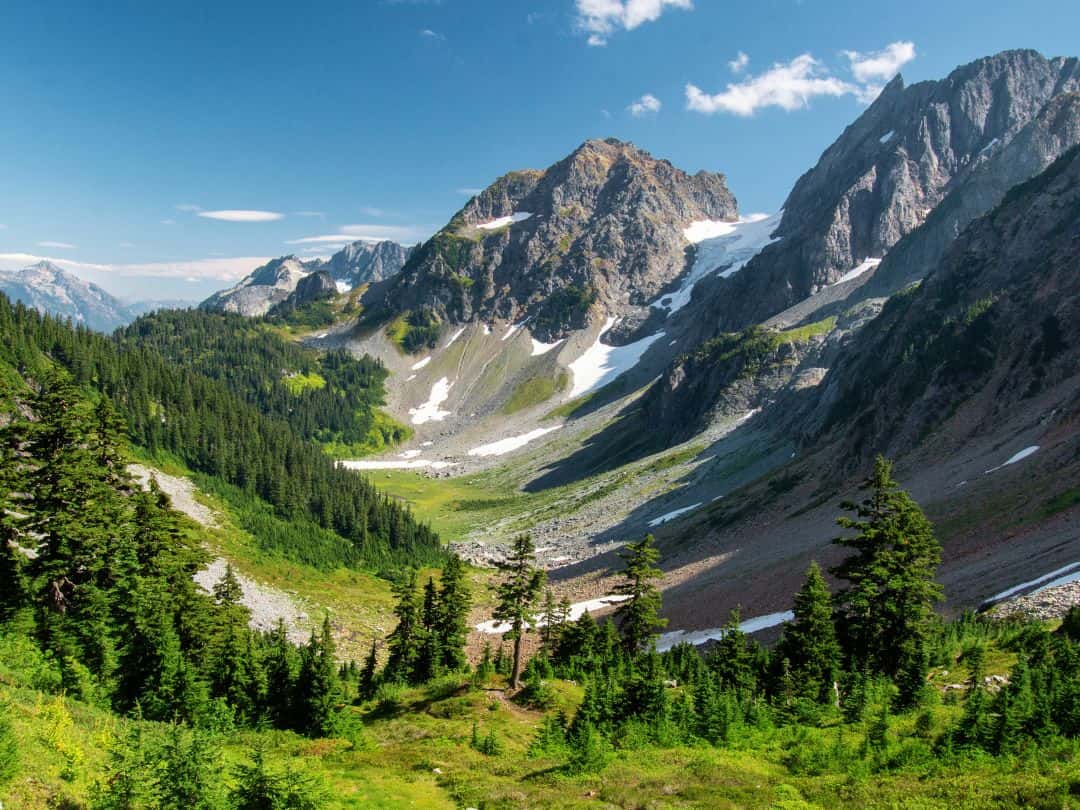
National Parks in Oregon and Washington / North Cascades National Park (Cascade Pass)
- Ladder Creek Falls: Witness the mesmerizing Ladder Creek Falls, beautifully illuminated at night by colorful lights.
- Rainy Lake: Explore Rainy Lake for a serene and picturesque setting, perfect for kayaking or a leisurely lakeside stroll.
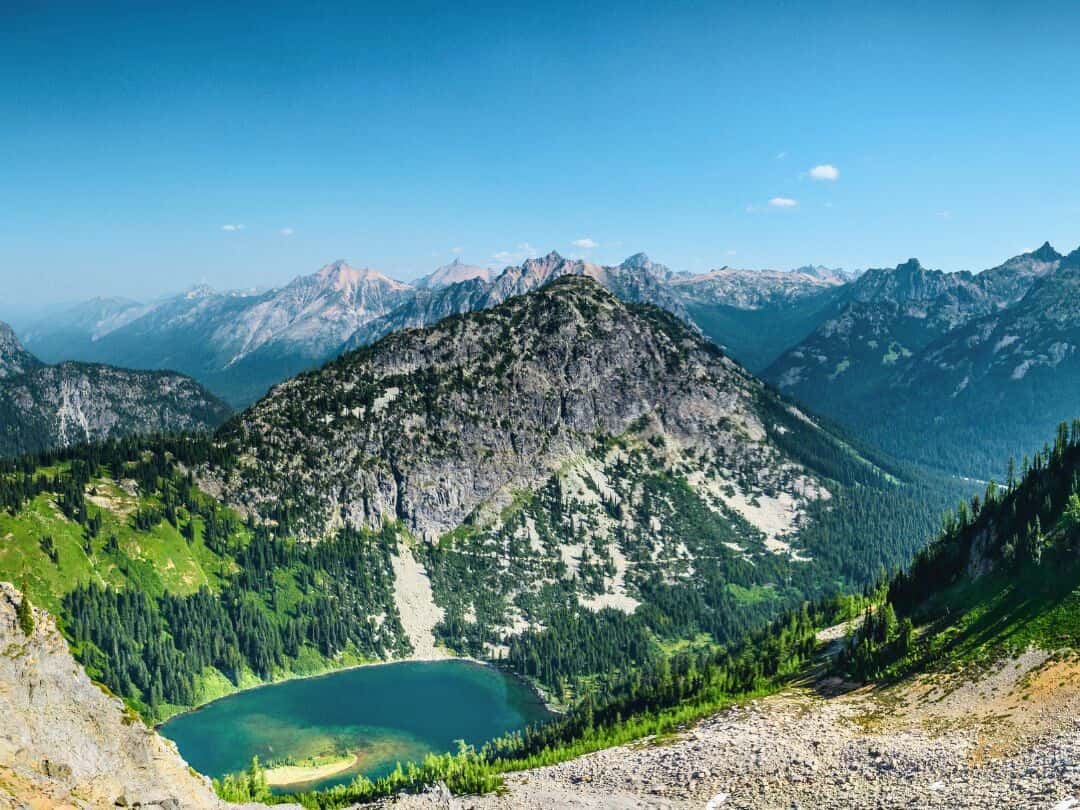
National Parks in Oregon and Washington / North Cascades National Park (Rainy Lake)
- Washington Pass Overlook: Stop at Washington Pass Overlook for awe-inspiring views of the rugged mountains and the iconic Liberty Bell Peak.
- Maple Pass Loop: Hike the Maple Pass Loop for panoramic views of alpine meadows, rugged peaks, and pristine lakes.
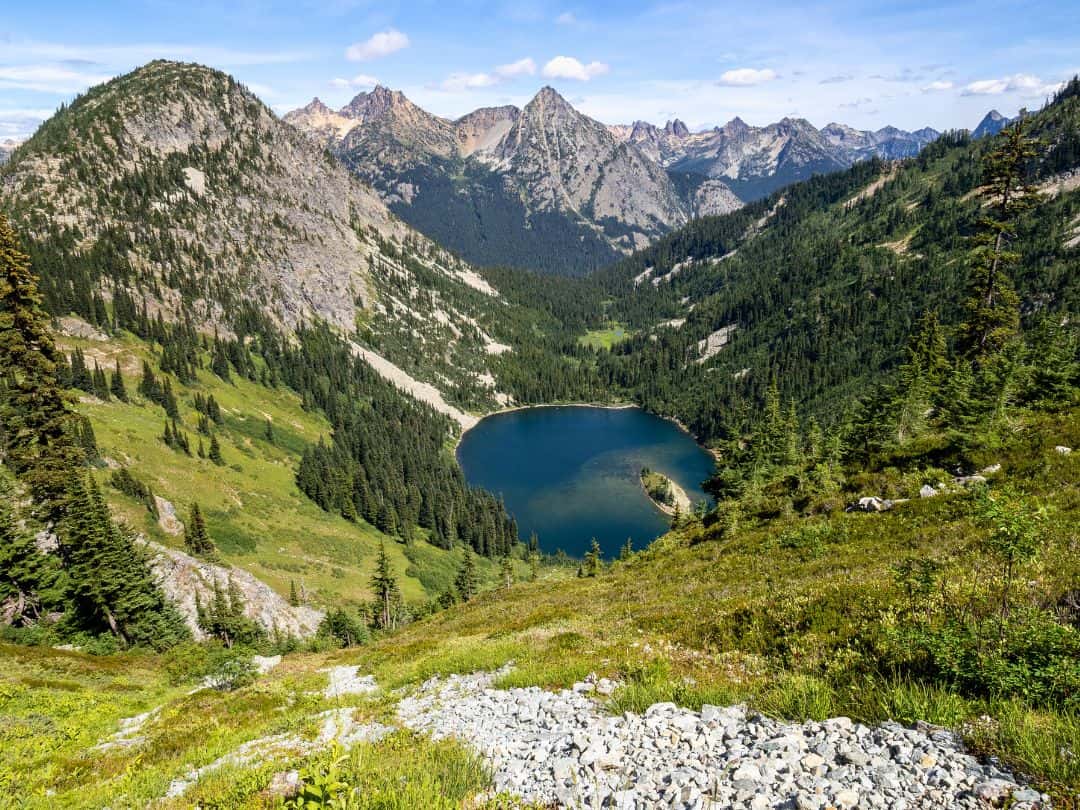
National Parks in Oregon and Washington / North Cascades National Park (Maple Pass Loop)
- Sourdough Mountain: Summit Sourdough Mountain for breathtaking 360-degree views of the North Cascades.
- Cascade River Road: Drive along Cascade River Road for access to various trailheads and beautiful viewpoints.
- Diablo Lake Overlook: Visit Diablo Lake Overlook for breathtaking views of the turquoise waters and surrounding mountains.
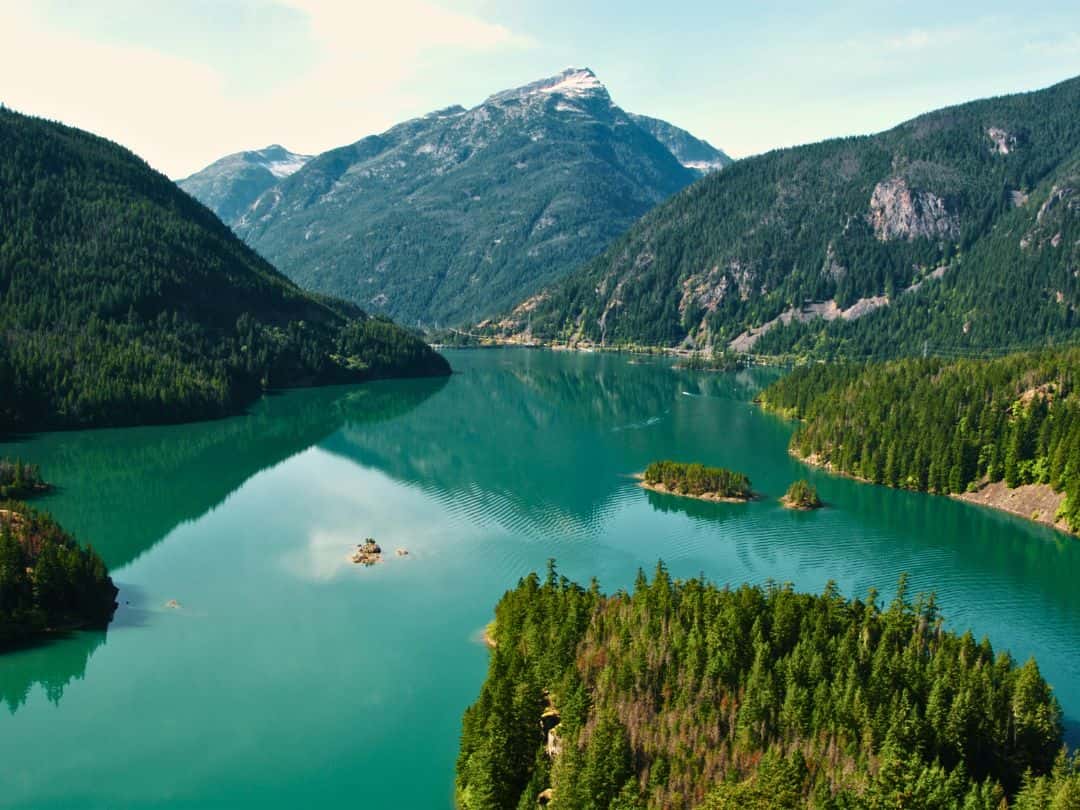
National Parks in Oregon and Washington / North Cascades National Park (Diablo Lake)
Ultimate Adventure in North Cascades
- Paddle Ross Lake: The ultimate experience in North Cascades National Park is paddling Ross Lake, a remote and stunningly beautiful reservoir nestled amidst the rugged peaks.
Rent a kayak or canoe and explore the tranquil waters, surrounded by wilderness and glaciers. Paddling Ross Lake allows you to access hidden coves, waterfalls, and pristine beaches, offering unparalleled opportunities for photography and wildlife viewing.
With its remote location and limited motorized access, Ross Lake provides a true sense of wilderness and serenity. Spending a few days camping along the lake’s shores will offer an unforgettable experience in the heart of the North Cascades.
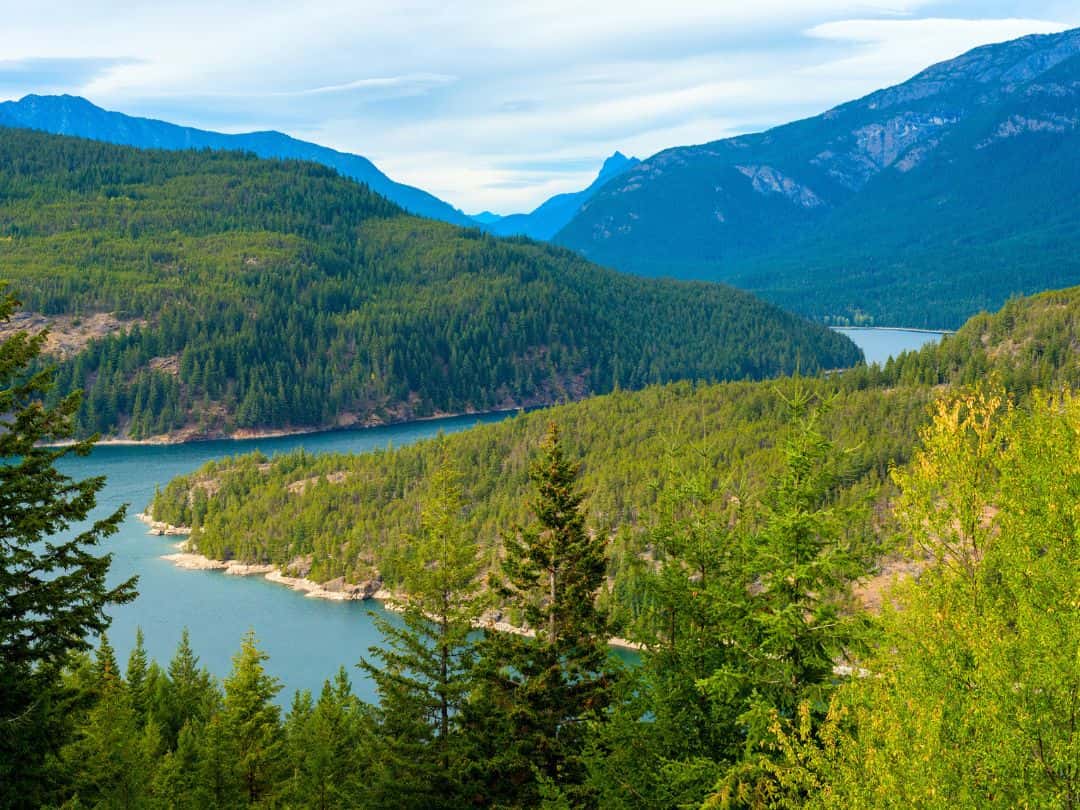
National Parks in Oregon and Washington / North Cascades National Park (Ross Lake)
Did You Find This Useful?
Why Not Save National Parks in Oregon and Washington to Your Pinterest Board!
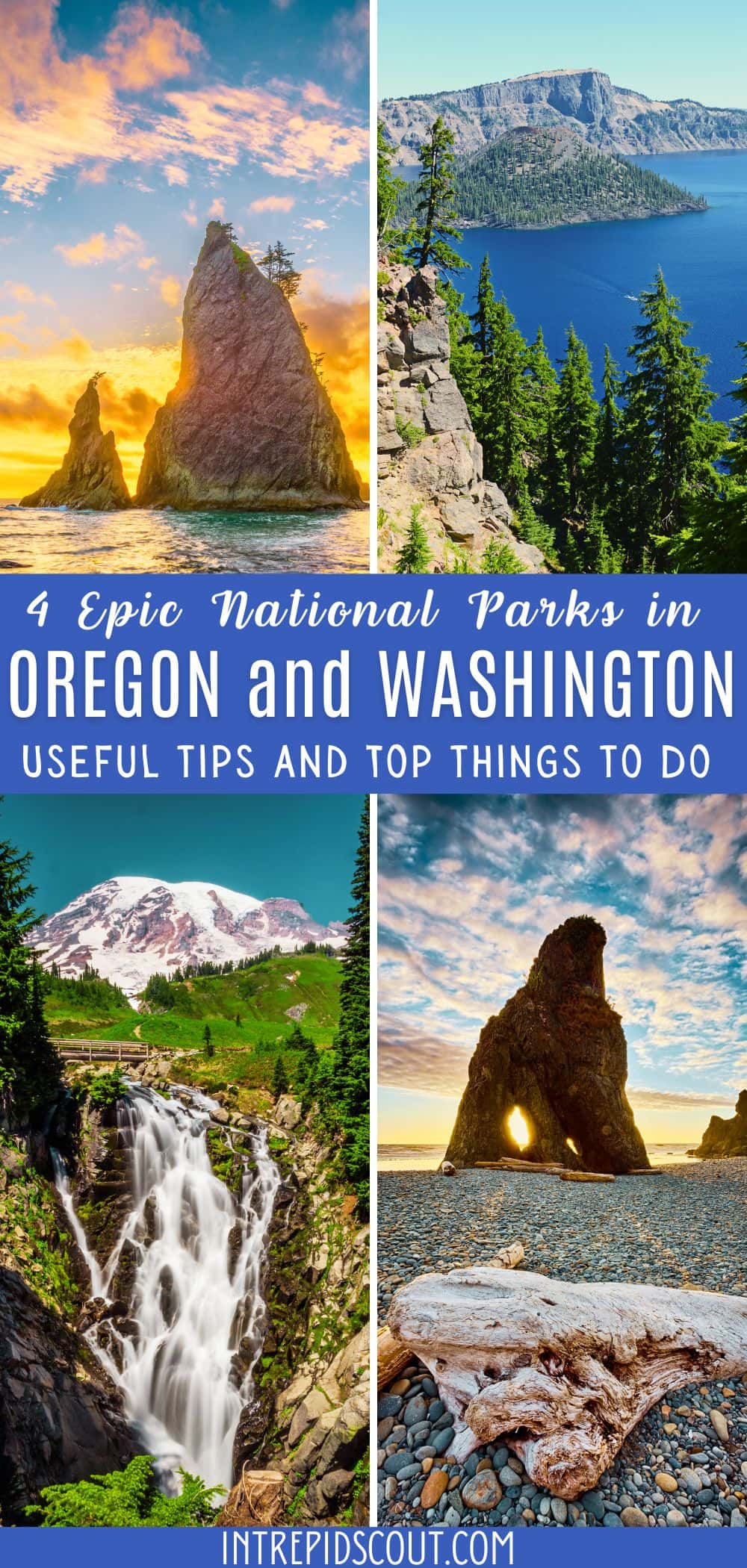
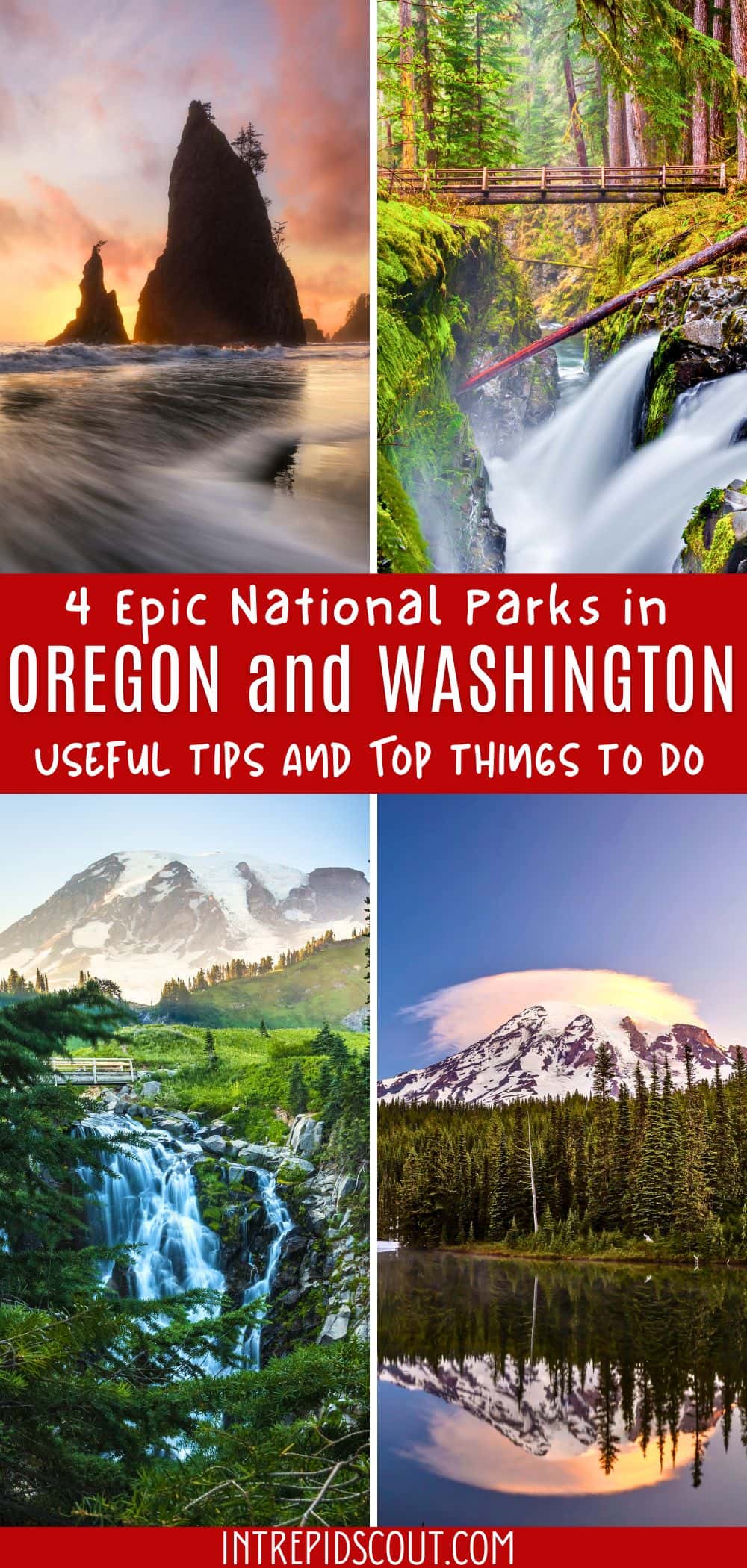
Now, It Is Your Turn, I Would Like to Hear Back from You!
Are you planning a trip to Oregon and Washington?
Please let me know! Drop me a quick comment right below!
Click on any of the images below to get inspired and to help you with the planning process for your trip to Oregon and Washington!
